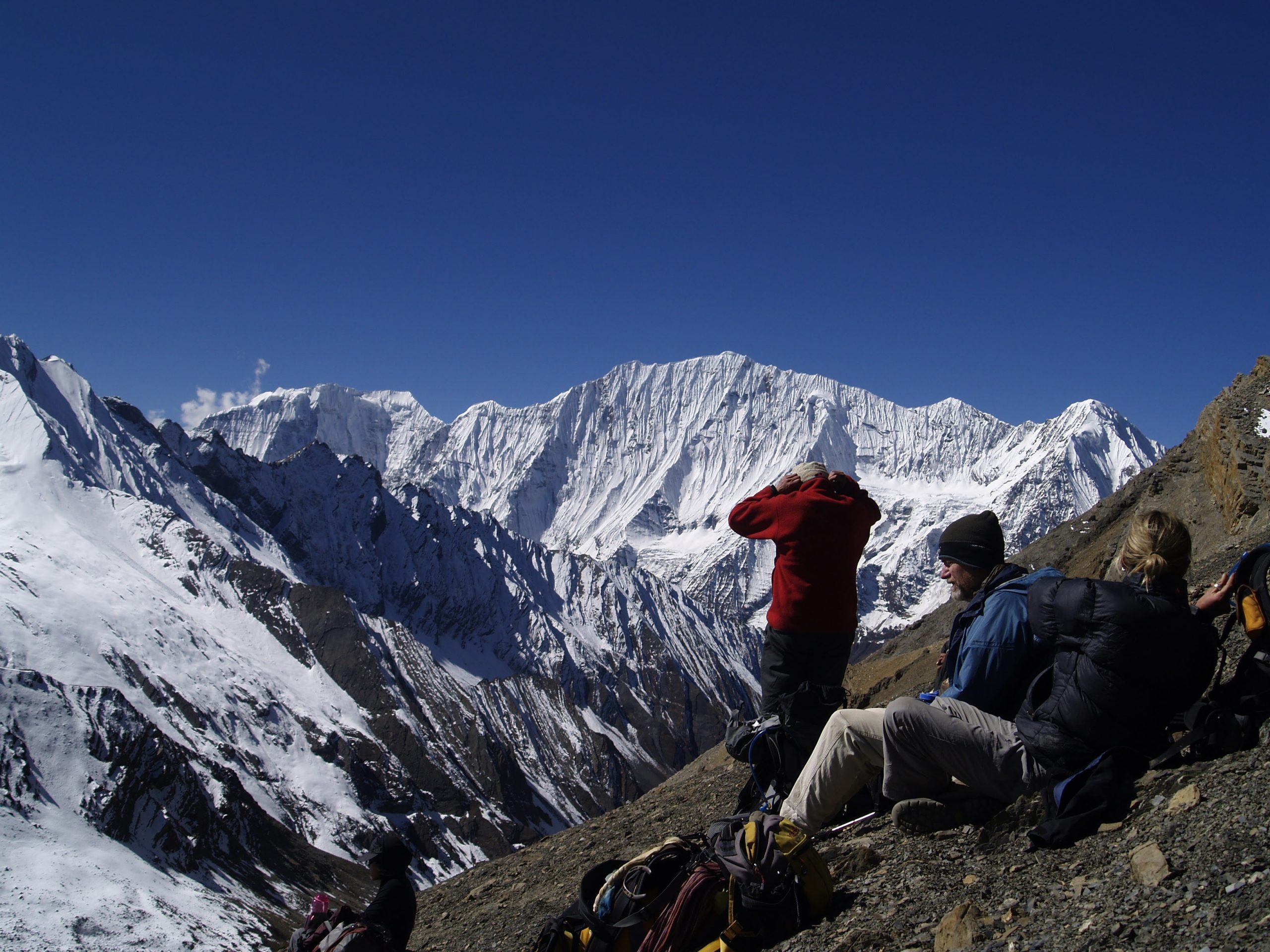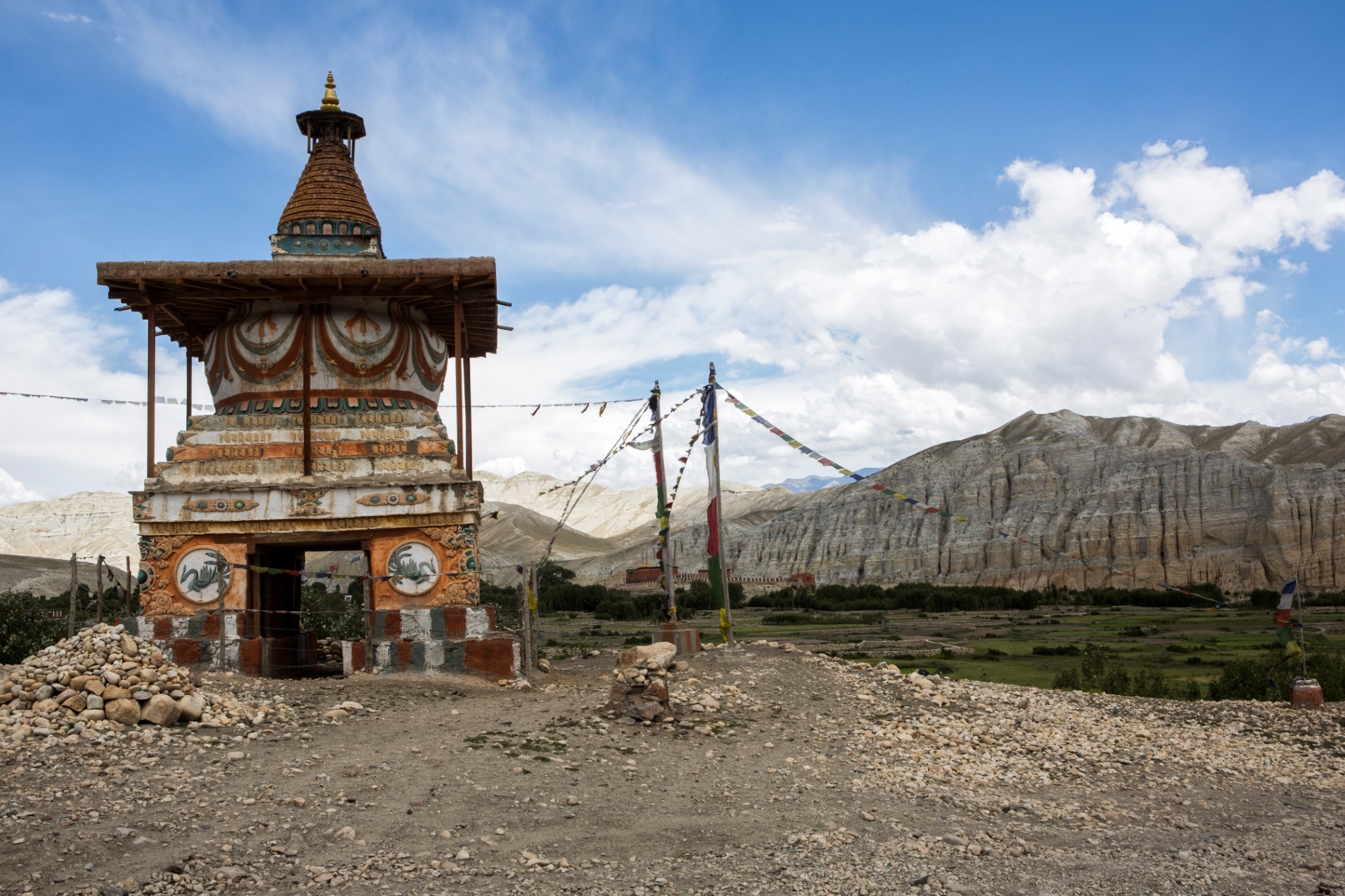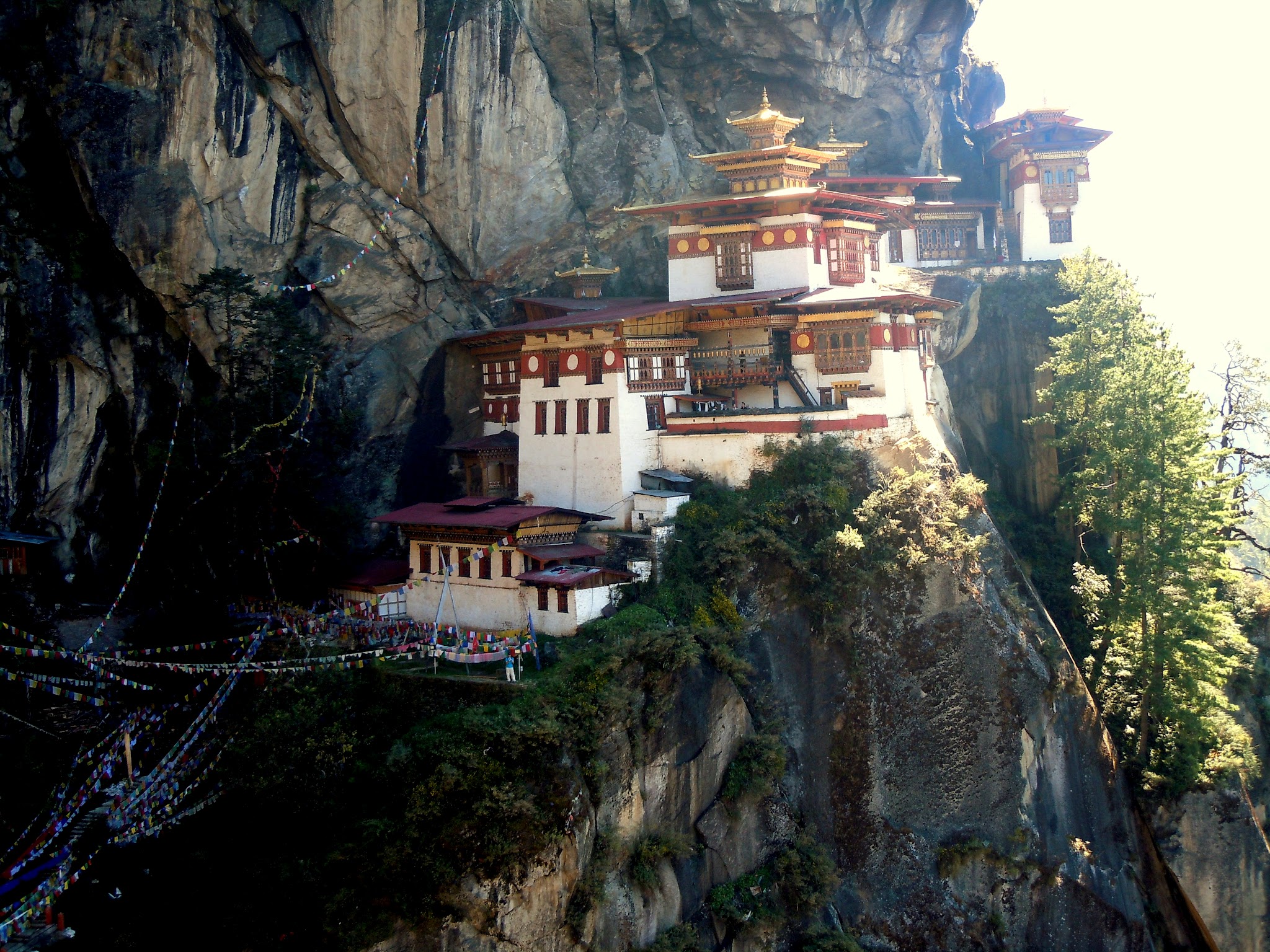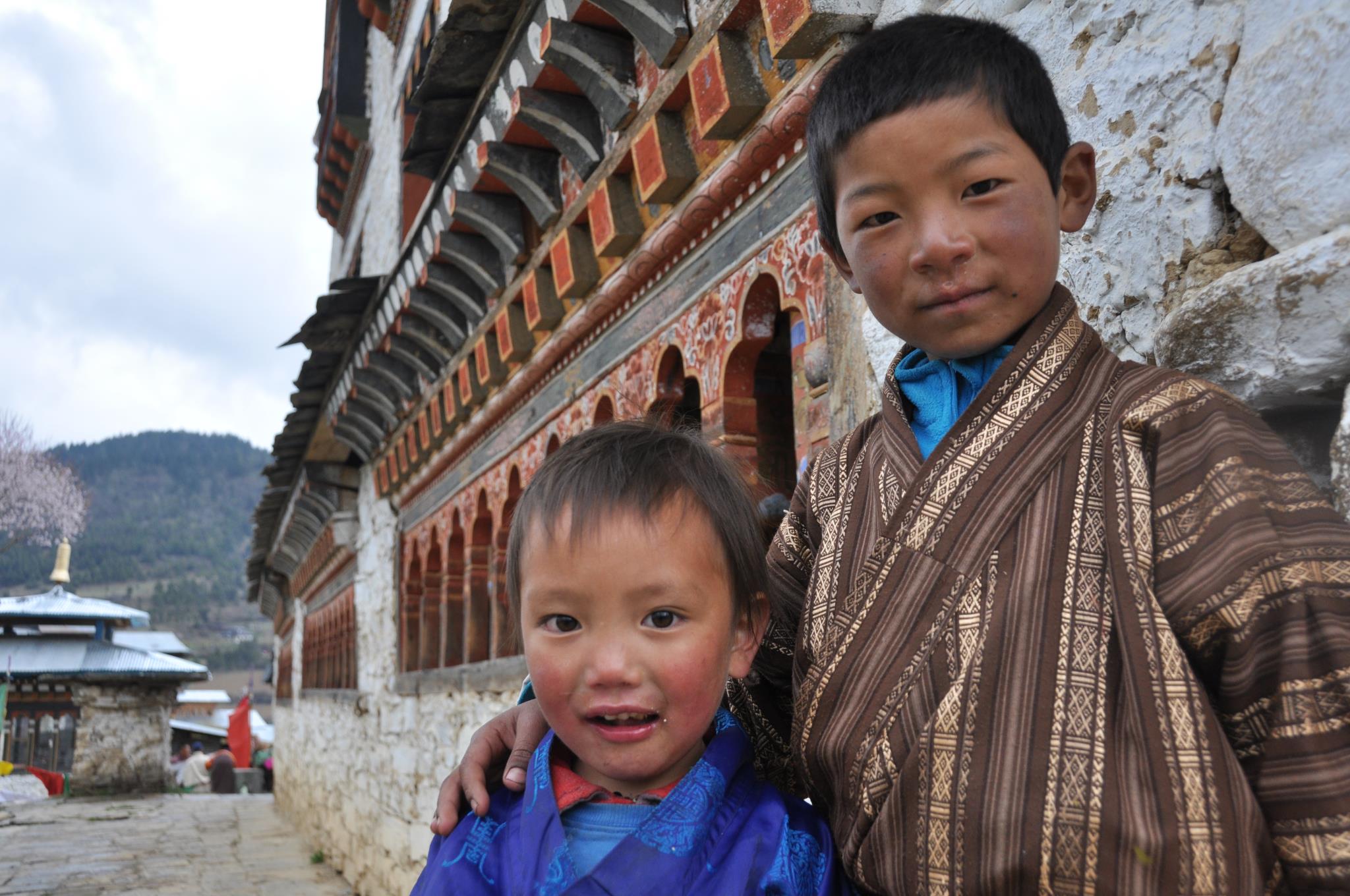"Magnificent Travels through Nepal & Tibet"
"Magnificent Travels through Nepal & Tibet"
Dhaulagiri Dhorpatan Camping Trek
Why Book With Us?
- Hassle Free & Best Price Guarantee
- Customer care available 24/7
- Hand-picked Tours & Activities
Get a Question?
Do not hesitage to give us a call. We are an expert team and we are happy to talk to you.
+977 9851157461
Tour Details
Diversity is the theme of this visit into relatively untrekked regions. Ranging from lush forested hillsides to mountain passes to remote mountain villages, this 20 day moderate trek offers a wide variety of Nepali culture, landscape and wildlife. From Beni (2700 feet) in western Nepal we leave the more developed villages, hiking through blooming rhododendron forest. We ascend through fern-laden, primrose-carpeted mountain forests alive with monkyes and birds, to the high passes of Deorali (10,200 feet) and Jaljala (11,200 feet) with commanding views of the Dhaulagiri and Annapurna ranges. Crossing the broad jaljala, we descend gently along peaceful streams into the magical Dhorpatan Valley rich with wildlife and scenery. From this alpine setting, we follow various streams and rivers back to verdant farmland and many charming villages. Throughout there are glimpses of Newar, Magar, Gurung and Tibetan culture. A highlight of this trip is a side trip up to Darsinge Kharkha with its views of glacier-covered Gurja Himal (23,400 feet), Ghustang North (21,200 feet) and Ghustang South (21,000 feet).
This 20 day moderate trek is non-technical and suitable for anyone in reasonably good shape who likes to hike and enjoys camping out for extended periods. This is not a backpack trip and porters will be used to carry your gear and camp staff will prepare all meals. Spring comes early to Nepal and we will see many rhododendrons in bloom at this time of year. Rhododendrons are Nepal’s National Flower and are not bushes but trees up to 60 feet high covered in red, pink and occasionally white flowers. These rhododendron forests are to be found at elevations between 6500 and 12,000 feet. We will be in an area seldom visited by westerners; thus we will see little evidence of the impact so obvious on more heavily traveled routes
Short Itenary
Day 01: Arrival in Kathmandu
Day 02: Sightseeing in Kathmandu & welcome dinner
Day 03: Drive to Baglung
Day 04: Trek to Beni
Day 05: Trek to Tatopani Bazaar
Day 06: Trek to Dharapani (Darbang)
Day 07: Dhaulagiri Base Camp
Day 08: Trek To Phedi via High Pass
Day 09: Trek to Gurjaakhani village
Day 10: Trek to Dharsing Kharka
Day 11: Trek to Forest Camp
Day 12: Trek To Lumsum village
Day 13: Trek To JalJala
Day 14: Trek to Dhorpatan Valley
Day 15: Trek to Burtibang at 4600 feet
Day 16: Trek to Kara Bazaar
Day 17:Trek to Bachitti Village
Day 18: Trek to Ourli Khola
Day 19: Trek to Tansen Bazaar
Day 20: Drive to Island Jungle Resort Chitwan National Park
Day 21: Birding & Drive Back to Kathmandu (farewell dinner)
Day 22: Fly Back Home
Itinerary
Meet at airport, transfer to Hotel Norbulinka in Thamel. Were supplied with welcome flowers, Nepal/US friendship pins, trekking maps, then drove through the color and noise and bustle of Kathmandu to the quiet and serenity of Baudhanath, a compound of Buddhist temples and monastery to listen to the chanting of young monks.
Trip Format
You should be in good physical shape for this trip and feel comfortable hiking seven to twelve miles per day on a trail while carrying a day pack of about ten pounds. This is a moderate trek, but remembers that all Nepal trail involve lots of ups and downs and that the better shape you are in, the more you will enjoy the trip. Our highest camp will not exceed 11,200 feet so acclimatization should not be a problem on this trip. On some days altitude gains and losses of up to 3000 feet can be expected. At least one rest day is scheduled for the trek, and there will be several half moving days’ half-days where we will be in camp by lunch leaving ample time for relaxing and swimming toward the end of the trek.
A program of cardiovascular conditioning such as running, swimming, biking or aerobics is essential, but try to supplement your exercise with hiking on steep hills or running up and down steps. The more you can condition by closely simulating the activities of trekking, the better off you will be. While the trip is rated as moderate, good conditioning is essential to your enjoyment of the trek. A principle requirement is a cheerful willingness to accept and even savor the many surprises that this exotic region of the world will undoubtedly have in store you.
In the spring daylight hours are long enough to allow a pace on the trek that will be leisurely and unregimented. You are encouraged to walk by yourself or in small groups. Take time to visit local houses and temples, share a cup of tea or rakshi with our porters and the locals in the many chiya houses. Pursue interests in photography, bird-watching and botany, and sample the culture of the area you are traveling through. The trip will emphasize cultural interaction with both our staff and local villagers. Many of the staffs have been with your leader before and many evening will be spent dancing, singing and drinking (if you wish) with them. You will quickly learn to love both the graceful and dervish-type dances of our Tamang and Rai porters. Several of our porters and kitchen staff are Buddhist thangka painters back in their village and will start and finish several brightly colored thangkas during the trek.
Remember that, the latitude of Nepal is between 26? and 30?N so it will warm at the lower elevations (short and T-shirt) while nights will be cool. Daytime temperatures will be in the 40? C and 50 ? C at lower elevations and in the 30?C to 40?C at our highest elevations. Temperatures at night will generally be cool – mostly in the 30?C and 40?C with our highest camps having below freezing 0? C night time temperatures. Your sleeping bag should be rated to 0 degrees C. Since we are in the rain shadow of the Himalayas, we can expect the weather to be generally sunny, although an occasional storm could occur.
We will have a GAMOW bag on the trip which is portable hyperbaric chamber that looks like an inflatable extra-large sleeping bag. The effective altitude inside the inflated GAMOW bag is about 5000 feet lower than the altitude you are at; it has been very effective in past years in relieving headaches and other symptoms of altitude sickness.
Personal gear will be carried by porters. Porters can carry two members’ duffel bags. Since their load is 30 kg, this means that your duffel cannot exceed ten kilos or 22 pounds. Tents are provided and are carried separately. We use roomy 3-person nylon Eureka Geom EX 3 or K2 expedition quality tents that are Geodesic dome style. You will be expected to share your tent with one other person. If we have an odd number of single men or woman the one with the single tent will have a Eureka Timberline tent which measure five feet by seven feet and are made of Nylon. Our Sherpa guides, besides making sure we do not get lost, also pitch and take down the tents and are responsible for supervising the porters and evening camps. We will have one guide in front, one in the rear and two who float throughout the group. They will be under the direction of the Sirdar. Many of our guides have visited the USA and Europe and most speak excellent English. We are sure to have a variety of ethnic groups on our staff, but primarily Rais and Tamangs.
Our kitchen staff is truly amazing. They are well trained in American tastes and standards of hygiene. A typical day may see you being offered lemon tea and cookies when you awake, juice and tomato omelet for breakfast, stir-fried vegetables and salami for lunch, tea and cookies when you arrive at the evenings campsite, and fresh lentil soup and Tibetan mo:mo (potstickers) for dinner. Our cooks have even been known to bake cakes over a double boiler arrangement. Many trekking cooks were trained by British agencies in spice less English cooking, but our cooks know how to use spices creatively without too much chili (common to most native Nepali cooking). Some nights you will be offered both hot and mild versions of the same dish. Huge yellow squash can often be purchased along the route as can fresh spinach and potatoes. We will also be bringing eggplant, cauliflower and cabbage from Kathmandu which the cooks stir-fry along with various other ingredients. Even the freeze dried meats that we will have some evenings will have a Nepali taste as garlic, ginger, onions and curry powder will add some zest. To cut back on the amount of cans that we bring into the mountains, we also bring freeze-dried juices from the USA as well as things like granola, cocoa and salami to add variety to our menu. Our kitchen crew cooks on kerosene stoves instead of using wood so as not to add to Nepal’s growing deforestation problem. Traveltimes Treks in Nepal have always been noted for the quality and variety of the meals offered. We try to offer you a good mix of native dishes as well as western style dishes.
We do not bring tables on the trek but we do have 3 legged camp stools to sit on. We all eat either sitting on the ground or on the camp stools around a big kitchen tarp, and we have a dining tent that can be pitched in case of rain. In an attempt to minimize the amount of fuel we use, we provide one large bucket of hot water every afternoon for washing when we are camping at cold high elevations. We do not routinely provide hot water to each tent as this waste too much fuel. A toilet tent is set up at each camp around a pit toilet. Each member is issued a bottle of iodine water-purification solution and a 0.45 micron molecular filter is set up to purify camp drinking water. Most backpackers will find our Nepal treks to be quite luxurious.
This is not a tour where everything can be planned in advance to run like clockwork. You probably won’t experience exactly what is written in the daily itinerary. Often adjustment must be made in the field. We want you to participate in the trip with the clear understanding that things can go wrong. Adventure travel does involve certain risks both emotional and physical. One has to be flexible when traveling in Nepal and have a cheerful attitude.
Included in the Cost
- Two nights in Hotel Potala Superior room (without breakfast)*
- Welcome dinner at Nepali Chulo (Authentic Newari food and cultural dance party)* Sightseeing around Kathmandu valley (Pashupatinath temple, Boudhanath stupa, Monkey Temple (Swoyambhunath temple!) & all airport transfers. In Dolpo Flight ticket for Kathmandu
- Accommodation and 3 times meals every day during trek (daily we discuss a few items for meals and give the tour leader of your company the decision for the meal of the group = one meal per person, bar bill not included). During the meals we provide coffee and tea. Traveltimes Treks will provide water for purification after breakfast, lunch and dinner at the participants needs. Iodine is sold everywhere at cheap price in Thamel.
- Assistance trekking guide, one porter for two members as well as their expenses including insurance
- Special permit, TIMS Card (Trekking Information Management System, $20 per person), domestic airport tax, all ground transportations and Dolpo local governmental taxes.
- And all the camping gear and unlimited food and neccessary staffs etc.
Not Included in the Cost
- World Heritage entry fees in Kathmandu while sightseeing (we provide cultural guide & private car)
- personal expenses like laundry * communication *shopping * meals in Kathmandu except welcome dinner * tips for guides and porters or staffs
- international Flights & Travel Insurance (required!)
| Start date | End date | Price | Status | Book |
|---|
Map
Why Book With Us?
- Hassle Free & Best Price Guarantee
- Customer care available 24/7
- Hand-picked Tours & Activities
Get a Question?
Do not hesitage to give us a call. We are an expert team and we are happy to talk to you.
+977 9851157461







